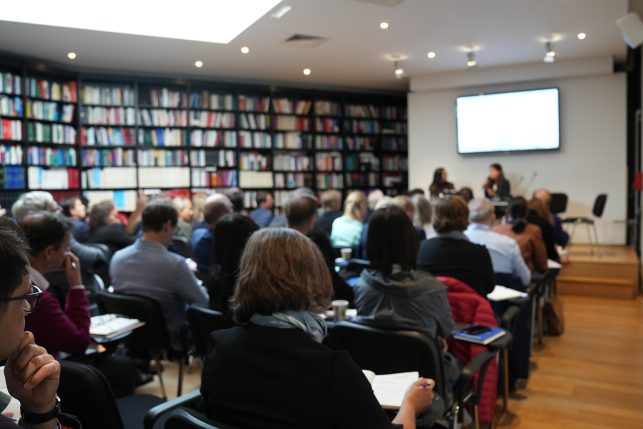The revision of the Motor Vehicle Regulation and its Guidelines is progressing rapidly with some good news but also a lot of conservatism and a risk of additional constraints
The European Commission launched on Wednesday 6 July a public consultation and call for contributions inviting all interested parties to comment on its proposals for the future of the Motor Vehicle Block Exemption Regulation. The Commission is consulting until 30 September 2022 on a draft regulation extending the validity of the automotive mini-regulation for 5 years and a draft communication introducing targeted updates to the additional automotive guidelines.
You will find below:
- The Commission’s press release de la Commission ;
- The public consultation and the call for contributions ;
- The draft regulation ;
- And the draft communication updating the old supplementary guidelines
- As well as the old supplementary guidelines to allow for comparison.
1. The good news
Two pieces of good news for the automotive sector:
a. The Commission’s intention to extend the Motor Vehicle Block Exemption Regulation and its Guidelines specific to the automotive sector
Even if the mini-regulation has little useful effect in terms of block exemption since the Commission traditionally considers that the market share in spare parts and after-sales services must be assessed brand by brand and that each brand exceeds the 30% exemption threshold, the texts relating to the specific rules applicable to the automotive sector nonetheless provide legal certainty to operators who have written documents from the Commission giving them precise indications of the Commission’s interpretation of the application of competition law to the automotive sector.
b. Maintenance of the tolerance of qualitative and quantitative selective distribution up to 40% market share in car distribution
The comparison between the text of the old Supplementary Guidelines and the draft Communication updating them brings at least one piece of good news.
Recital 56 of the 2010 Supplementary Guidelines rightly provided that “as regards the specificities of new motor vehicle distribution, quantitative selective distribution will generally satisfy the conditions laid down in Article 101(3) of the Treaty if the parties’ market shares do not exceed 40%”.
This tolerance is not called into question by the draft new Guidelines, as no changes to Recital 56 are reported.
This assessment of the intensity of inter- and intra-brand competition in the field of new vehicle distribution is fully justified. It also makes it possible to correct, even if only marginally, the far too restrictive conception of the geographical dimension of markets, which is still confined to national markets, whereas cross-border trade is significant and the markets are all in the process of being Europeanised.
2. Maintenance of outdated conceptions and the announcement of new constraints
a. The maintenance of a rigid conception of market definition that is out of step with the reality
The drafts submitted for consultation do not change the traditional views on market definition. It should be recalled that Recital 13 of the former motor vehicle regulation considers that “a separate aftermarket can be defined” distinct from the distribution of new vehicles and that there are “markets for the purchase and sale of spare parts” and “markets for the provision of repair and maintenance services”.
Point 15 of the 2010 Supplementary Guidelines is also not subject to a rewording proposal. It states peremptorily that “because of the generally brand-specific nature of the markets for repair and maintenance services and for the distribution of spare parts, competition on those markets is inherently less intense compared to that on the market for the sale of new motor vehicles”. Paragraph 57 of the 2010 Supplementary Guidelines considers that “Insofar as a market exists for repair and maintenance services that is separate from that for the sale of new motor vehicles, this is considered to be brand-specific”. This highly controversial point is not reworded in the draft amendment to the Guidelines either. The competition authorities rely on these restricted market views to consider that manufacturers’ aftermarket networks control on average 50% of the aftermarket and therefore cannot benefit from the block exemption (ADLC, opinion no. 12-A-21 of 8 October 2012). The only concession to reality is limited to footnotes in the old Supplementary Guidelines admitting that it is possible in some cases to define a systems market that includes motor vehicles and spare parts when the purchase decision takes into account the overall cost of the vehicle, maintenance and repairs, but excludes its application to private vehicles and thus seems to reserve it for industrial vehicles without clearly admitting it.
These traditional concepts were already questionable in 2010, they are now completely outdated. Due to competition from independent repairers, quick repair franchises and multiple branded repair networks, the automotive aftermarket is fully competitive. All these operators, as well as all members of the brand networks, are now able to provide after-sales services for all car brands, especially since the sale of parts to repairers is free and cannot be hindered and any independent operator has access to technical information. The service rate for vehicles of the brand by repairer of the official networks is now less than 50% on average and for some brands just over or about 30%. Repair networks should therefore benefit from the block exemption even in the case of quantitative selection, the 40% tolerance applicable to the distribution of new vehicles being logically extended mutatis mutandis to the motor vehicle aftermarket.
b. An outdated position of access to repairer networks in relation to market realities and the evolution of case law
Point 70 of the former Supplementary Guidelines on access to networks of authorised repairers remains unchanged. They indicated that the Commission considers it important that access to the networks of authorised repairers remains generally open to all firms that meet the defined quality criteria. In other words, they argued for an obligation to approve all applicants for entry into a repair network that meet the approval criteria. Again, no changes to this point are announced. However, it corresponds neither to the reality of the market and the needs of professionals, nor to the positive law on refusal of authorisation as it results from case law.
These conceptions are primarily likely to encourage abnormal situations. In practice, former members of repair networks whose contracts were terminated with two years’ notice because they were not performing satisfactorily without however being able to be accused of serious misconduct, try to take advantage of such claims to reapply for approval at the end of the notice period and thus benefit from a permanent renewal of their contract, a kind of perpetual contract even though the relationship with the brand is very bad and a forced contract has never encouraged efficient cooperation
Apart from allowing the instrumentalisation of competition law in order to obtain a perpetual continuation of degraded relationships, point 70 of the old Supplementary Guidelines is completely out of step with the reality of competition in the aftermarket. Competition in the aftermarket is extremely fierce. There is no dominant position of authorised repairers in the aftermarket of their brand, as they are in full competition with a multitude of players who are constantly gaining ground every year (see above in a). The fact that there is one more or less authorised repairer in a catchment area does not change the competitive situation.
In particular, the position expressed in point 70 of the former Supplementary Guidelines does not correspond at all to the position of case law. German case law has long held that repairers’ applications to join a network should be assessed not on the downstream market for servicing vehicles for end customers but on the upstream market for the supply and demand of repair contracts, which is multi-brand and on which no single brand has a significant market share (BGH, 30 March 2011, KZR 6/09) even if the aftersale service of top of the sale vehicles may request special qualities (BGH, 26 Jan. 2016, KZR 41/14). Nor does it correspond to French case law. Firstly, it is important to know whether a refusal of approval constitutes an agreement or a unilateral act. In many cases, French case law has recognised that there is a unilateral act. Even if this refusal is concerted with a member of the network or is considered, rightly or wrongly, as characterising an explicit or implicit agreement with the network, in almost all cases, refusals to authorise former authorised repairers who reapply to remain part of the network are deemed to be in conformity with contract law and competition law (see, most recently, Court of Cassation, 16 Feb. 2022, no. 20-11.754, 21-10.451 and 20-18.615) .
c. New constraints on the provision of vehicle-generated data
The main contribution of the new texts is to provide that vehicle-generated data can be an essential input for repair and maintenance services and to propose therefore to extend the existing principles to the provision of technical information, tools and training necessary for the provision of repair and maintenance services, so as to explicitly cover vehicle-generated data.
It is therefore a restriction of competition which brings qualitative distribution within the scope of Article 101(1) if a party to an agreement refrains from providing independent operators with an essential input such as, inter alia, vehicle-generated data, it being understood that the concept of independent operators includes independent repairers, manufacturers and distributors of spare parts, manufacturers of repair equipment or tools, publishers of technical information, automobile clubs, roadside assistance companies, operators offering inspection and testing services and operators providing training for repairers (point 62 of the revised draft Supplementary Guidelines).
Following the same logic, it is proposed in a new point 67a of the draft revised Supplementary Guidelines that the standard arrangements for making technical information available set out in point 67 of the 2010 Supplementary Guidelines (on request, without undue delay, in a usable form, without the price charged discouraging access by not taking into account the independent operator’s use of the information, etc.) should apply to vehicle-generated data.

 MY ACCOUNT
MY ACCOUNT














